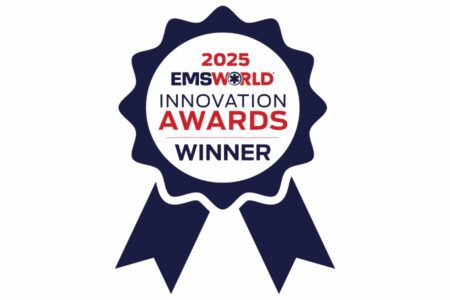Stroke care is a race against time. For patients experiencing large vessel occlusions (LVOs), early identification and rapid transport can make the difference between recovery and permanent disability.
That urgency drove Allina Health EMS, a hospital-based agency serving the Twin Cities metro and surrounding areas, to enhance its prehospital stroke triage by integrating the VAN Stroke Scale (a rapid screening tool used to detect LVO strokes) into its protocols, education, QA programs, and Elite ePCR system.
With approximately 100,000-130,000 calls per year, a staff of more than 600, and a system that includes 13 hospitals and nearly 300 clinics, Allina Health EMS operates at a significant scale. Their stroke triage improvements have led to more accurate documentation, smarter transport decisions, and a measurable system-wide impact.
These insights were shared during the ImageTrend webinar, Enhancing Prehospital Stroke Identification and Triage, where the Allina team detailed their approach to implementing VAN and improving outcomes across their EMS system.
“Our overarching goal is simple but critical: we want to get the right patient to the right place at the right time,” explained Christie Traczyk, Analytics and QA/PI Manager at Allina Health EMS. “And for these large vessel occlusion strokes, that really means rapid identification and then the ability to bypass non-thrombectomy centers when that’s appropriate.”
To achieve that goal, Allina Health EMS launched a systemwide initiative focused on integrating the VAN Stroke Scale into clinical workflows, documentation practices, and destination protocols, ensuring crews could confidently identify and triage suspected LVOs in the field.
Why the VAN Scale?
The VAN (Vision, Aphasia, Neglect) stroke scale was selected in collaboration with the neurology team at Allina Health to support more accurate triage for LVO strokes.
“A focus on early LVO identification using the VAN tool and proper triage to destination is targeting door-to-thrombectomy time, functional outcomes, and overall survival,” shared Christie.
The VAN scale is used in tandem with the Cincinnati Stroke Scale (CSS). Crews first conduct a CSS to screen for general stroke signs, then follow up with a VAN assessment if CSS is positive.
“It’s important to highlight that VAN is layered on top of the Cincinnati Stroke Scale. It’s not a replacement. It focuses on any motor weakness and changes in cortical signs, including vision, aphasia, and neglect,” said Christie.
Research presented during the webinar supports VAN’s effectiveness as a field-friendly LVO screening tool for EMS. Two key studies were highlighted:
- Duvekot et al. (2023)
Found that the VAN scale outperformed other prehospital stroke tools like RACE and FAST-ED in identifying large vessel occlusions. - Lima et al. (2022)
Reported that VAN demonstrated 85% sensitivity and 88% specificity for detecting LVO when compared to computed tomography angiography (CTA).
Together, these findings support what many EMS systems—including Allina Health EMS—are seeing in practice: that VAN is a quick, evidence-based tool that helps crews identify the most severe strokes earlier and get patients the specialized care they need, faster.
Workflow Changes That Drove Adoption
Allina Health EMS began educating its teams on the VAN Stroke Scale in Spring 2023. As is common with the introduction of new tools in the field, initial use and documentation rates were low, around 5%. Recognizing this early challenge, the team quickly responded by identifying workflow barriers and implementing systemwide improvements to support adoption.
To streamline the process, they embedded both the Cincinnati and VAN stroke scales into a neuro-specific Power Tool within ImageTrend Elite™.
“We added in two vital sign entries at the bottom of the exam Power Tool, and we defaulted Cincinnati and VAN scale,” shared Marc LeVoir, Senior Safety and Quality Coordinator at Allina Health EMS. “So that way, as providers are scrolling for facial droop, arm weakness, mental status, et cetera, they can put in negative or positive, and then they have it all, it’s done.”
This workflow enhancement led to a rapid improvement in compliance, from 88% in June 2024 to 95% in July, and the agency has maintained over 97% compliance in the months since.
Destination Protocols Based on VAN Results
VAN assessments also play a critical role in transport decisions. If a patient has a positive VAN and is within 15 minutes of a thrombectomy-capable center, EMS bypasses smaller hospitals. If not, they are transported to the closest appropriate facility.
“If we bring every single stroke code we have to a hospital that can do thrombectomy, that means there’s a lot of time that’s going to be taken up for those neurologists. It’s going to be a lot of time that the CT scanners are in use, which means we aren’t triaging appropriately and getting the patients where they need to be,” said Marc.
One scenario shared during the webinar described a patient located 16 miles from a thrombectomy center and 3.5 miles from an acute stroke-ready hospital.
“Depending on when the call is happening and all the surrounding circumstances, you can start by triaging the situation and going to the closer facility if needed. They can begin the process, and then we can move the patient later, if necessary,” explained Marc.
From Compliance to Outcomes: A Systemwide Effort
With VAN usage and documentation now consistently at 97% compliance, Allina Health EMS is shifting focus from implementation to impact. The team is actively evaluating how VAN usage affects clinical outcomes, such as door-to-thrombectomy times and overall patient recovery. They’re also exploring whether protocol refinements could further improve triage decisions, especially in edge cases where longer transport times may still justify bypassing stroke-ready hospitals.
This initiative has already earned statewide recognition, receiving the Minnesota Department of Health’s EMS Operational Award of Excellence. But for Allina Health EMS, the work doesn’t stop with compliance or accolades, it’s about collaboration across the entire system, from field crews to neurology teams, dispatch, education, and QA.
“Stroke triage is not just a protocol, it’s a promise that we have made to better serve our communities,” stated Marc.
To hear more insights directly from the Allina team—including practical examples and key lessons from the rollout—watch the full Enhancing Prehospital Stroke Identification and Triage webinar.




